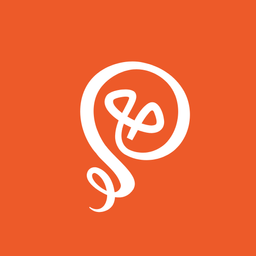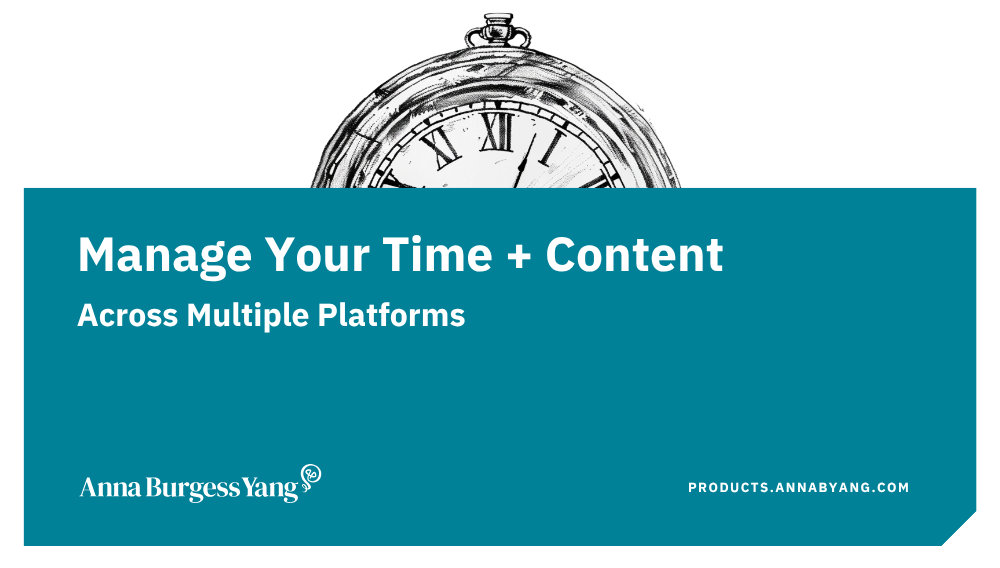Build an Audience with a High-Quality Lead Magnet
Start with a valuable freebie.

If you're trying to grow an audience, it's tempting to believe that you need to do everything and be everywhere. YouTube. Newsletter. Podcast. Social Media.
Whew.
Many creators make the mistake of producing a lot of content so they can build an audience... with no clear goal of what to do with that audience. A large social media following doesn't translate to money in your bank account.
Here's the thing: you don't need to have a big, fancy paid product today to build an audience. I've spent several years offering free products to build trust with my audience and collect email addresses. When I'm ready to launch a higher-ticket, paid item, I can send a campaign to these email addresses I've collected.
You can start with one high-quality lead magnet that helps your audience solve a real problem. When you create something valuable and offer it generously, you lay the foundation for people ot want to learn more from you later. That's how you turn attention into relationships and relationships into paying customers.
Identify your exact target audience
When I first started creating content for freelancers and solopreneurs, I quickly realized how crowded the space is. There's no shortage of advice about finding clients, pricing, and productivity.
I had a lot of information and resources to share with this audience, but I needed to create something different than everyone else. I worked with a brand designer, and he suggested trying to describe myself in just a few words.
I kept coming back to my obsessions with tools operations — that "behind the scenes" stuff. Systems, processes, and automation make solo business life easier. And very few people were talking about operations (or, at least, they weren't giving a lot of concrete examples). Solopreneur operations became my thing.
Being known for something specific gives people a reason to follow you. It's how they remember you and how they decide that your content is worth their attention. Plus, it helps you refine your content. Before I honed in on "solopreneur operations," I was covering a lot of topics. With solopreneur operations, I can take a more focused approach when I create content.
Show up where your audience can find you
You can't build an audience if people don't know you exist. But not every platform is worth your time.
I'm a big believer in not putting all of your eggs in one social media basket. Case in point: Twitter. The platform has changed dramatically over the years. People who put all of their energy into Twitter found themselves starting over — and often starting from zero — if they left Twitter.
But I also recognize that it's a lot of time and energy to create content for multiple platforms. It's ok to give up on one that isn't working for you. For example, I eventually stopped using Instagram. Growth there depends on a lot of video content, and I'm better with text-based content.
Instead, I've focused my energy on platforms that are aligned with the type of content I like to create: LinkedIn, Threads, and Substack Notes. Those are also the channels where I've seen the most consistent growth.
Because all three are text-based platforms, I'm not reinventing the wheel each time. Instead, I'm repurposing the content I've already created. I can start with long-form content (like this blog post), and create short-form social posts for LinkedIn. Then I have a workflow that reformats those posts for Threads.
Create a free lead magnet (so you can “own” the audience)
Think of social media as rented space. You can't control the algorithms or the company's priorities (which may change over time). The only way to ensure you can consistently reach your audience is by getting them off these platforms. And to do that, you need to get them to give you their email address. With email, you always have a way to get in touch.
That's where a free offer comes in, also known as a lead magnet. A lead magnet is something really valuable that your audience wants to have.
My first lead magnet was an eBook, designed in Canva, and published on Gumroad. I promoted it on social media and added it as the CTA at the end of blog posts I published (which are cross-posted to Medium). The free download kicks off an automated email sequence and, eventually, my newsletter.
Do not abuse a lead magnet opportunity by providing something really low-quality. I've been on the receiving end of terrible lead magnets, and it makes me distrust the creator. I feel like they tricked me into providing my email address.
Maintain a relationship with your audience
Once you've captured someone's email address, don't let them forget about you. I send a bi-weekly newsletter to my audience. In it, I include content that I haven't published anywhere else. I also include links to my previously published long-form content (like blog posts).
Not ready to commit to a newsletter? I get it. A lot of newsletters are weekly, and mine is bi-weekly, simply because I'm already creating a lot of content elsewhere. Putting together a newsletter is a lot of work.
Instead, you could send a monthly update to your email audience. That way, they remember your name. Social feeds are notoriously unpredictable, so even if they downloaded your lead magnet, that doesn't mean they're seeing your content.
In your monthly update, you could include:
- What you've been working on
- Links to your most popular social posts
- Any content you've created for other people, like being a podcast guest
- Articles you find interesting, even if they're written by other people
- Upcoming webinars or workshops you're hosting
Consistency is more important than "constantly." In fact, I immediately unsubscribe from creators who email me constantly. High-quality content doesn't end with your lead magnet. Remember, every time you land in someone's inbox, you're asking them to exchange some of their time and attention for the thing you're offering.
Consistency signals reliability and will build credibility over time.

Expand your free offers
If your lead magnet is working well, stick with it. But as your business grows, adding additional lead magnets can attract different segments of your audience. I now have several freebies available for download on Gumroad. I rotate which one I'm promoting, depending on the topic.
Behind the scenes, I keep a list of ideas for new freebies in Trello. I work on developing them over time. Sometimes, a new freebie is tied directly to an upcoming webinar I'm hosting. Other times, it's because I sense that a resource would be helpful and doesn't already exist (or I could do it better).
Each new lead magnet provides another path for people to find you.

Use AI as a sidekick
I use ChatGPT to help me re-promote my lead magnets. I can upload the PDF and ask ChatGPT to create some posts for social media. I then edit the posts before scheduling. But, for me, it's a lot easier to edit a social media post than to write one from scratch.
You can also use AI to brainstorm ideas for new free offers. Talk to ChatGPT about your audience's biggest pain points. Then, have ChatGPT suggest some free resources for you to create, whether they're checklists, templates, or something else.
Practical toolkit
- Airtable [affiliate link*]: Organize your lead magnets
- Canva: Create your lead magnet
- ChatGPT: Develop lead magnet ideas
- Gumroad: Publish and sell digital products
- Kit [affiliate link*]: Send a monthly newsletter
Build trust so you can offer something bigger
I first launched my lead magnet about two years ago. I have yet to offer a high-ticket item. A few of my digital products are paid, but I'm not relying on the income at this point.
I want to offer something bigger, like a cohort or consulting, but the timing hasn't been right for various reasons. So, instead, I continue to focus on establishing who I am and building trust.
You don't need to know your exact paid offer to launch a lead magnet. And audience growth doesn’t require a complicated strategy or dozens of lead magnets. Start with one high-quality freebie that genuinely helps your audience solve a problem.
Over time, the trust you build will become the foundation for whatever comes next, whether that’s a paid product, a service, or something entirely new. Monetizing an audience through a paid offer is about earning trust — and keeping it — through genuine value.
Check out my free guide for creators looking to better manage their time and content across multiple platforms.







